Test changes in the ontology
Foundry branching allows you to test changes to the ontology without disrupting your live production environment. On your Foundry branch, you can modify ontology resources based on branched datasource changes, and test these modifications downstream in supported applications.
The following sections describe the Foundry branching workflow for testing changes in the ontology.
Definitions
- Branch: A branch is an environment derived from the main version, designed to enable experimentation and changes without impacting the
Mainbranch. This allows users to test and refine adjustments in an isolated environment before merging them back intoMain. - Proposal: When you create a Foundry branching proposal, an ontology proposal is automatically created as a subset to track ontology-specific changes. The ontology proposal contains metadata such as reviews, name, and descriptions of the ontology changes being merged into
Main. Proposals serve as a mechanism for reviewing and approving changes made in a separate branch before they are integrated intoMain. - Rebasing: Incorporate the latest changes from
Maininto your current branch to keep your current branch up-to-date.
Branching lifecycle
The general branching workflow has four steps:
- Modify resources on a branch
- Rebase your branch and resolve merge conflicts
- Prepare your branch for review
- Merge your branch
1. Modify resources on a branch
To modify the ontology on a branch, you can either create a new branch in Ontology Manager, or access an existing branch using the branch selector.
To create a branch, open the branch selector and choose Create new branch to open a dialog where you can add a title and description for your branch.
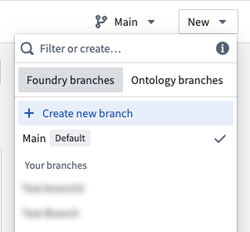
If you already have changes to the ontology that you would like to include in a branch, you can select Save to new branch from the save dialog to create a separate branch with those changes. Note that if you make changes to any protected ontology resources, you will be required to save to a new branch.

You can only branch from the main ontology, also known as Main branch.
While on a branch, a branch task bar at the bottom of the interface will display your current branch name and additional metadata.
2. Rebase your branch and resolve merge conflicts
Consider these known limitations related to rebasing and merging your branch.
While you are introducing changes on your branch, Main can also update with new changes made by others. Rebasing incorporates the latest changes from Main into your current branch to keep your current branch up to date.
If your Foundry branch does not contain changes to the ontology, rebasing occurs automatically. Once you introduce ontology changes to your branch, including indexing an object type, you will need to manually rebase to keep your branch up to date with main.
Rebase a branch
When there are new changes from Main, a blue indicator appears on the Main branch updates tab in the sidebar to prompt you to review these changes.
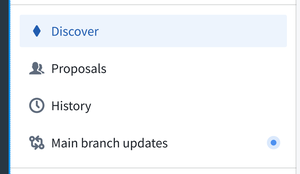
Navigate to Main branch updates page to view incoming changes since your last rebase — or since branch creation, if this is your first manual rebase. Select Rebase branch to update your branch with the latest version of Main.
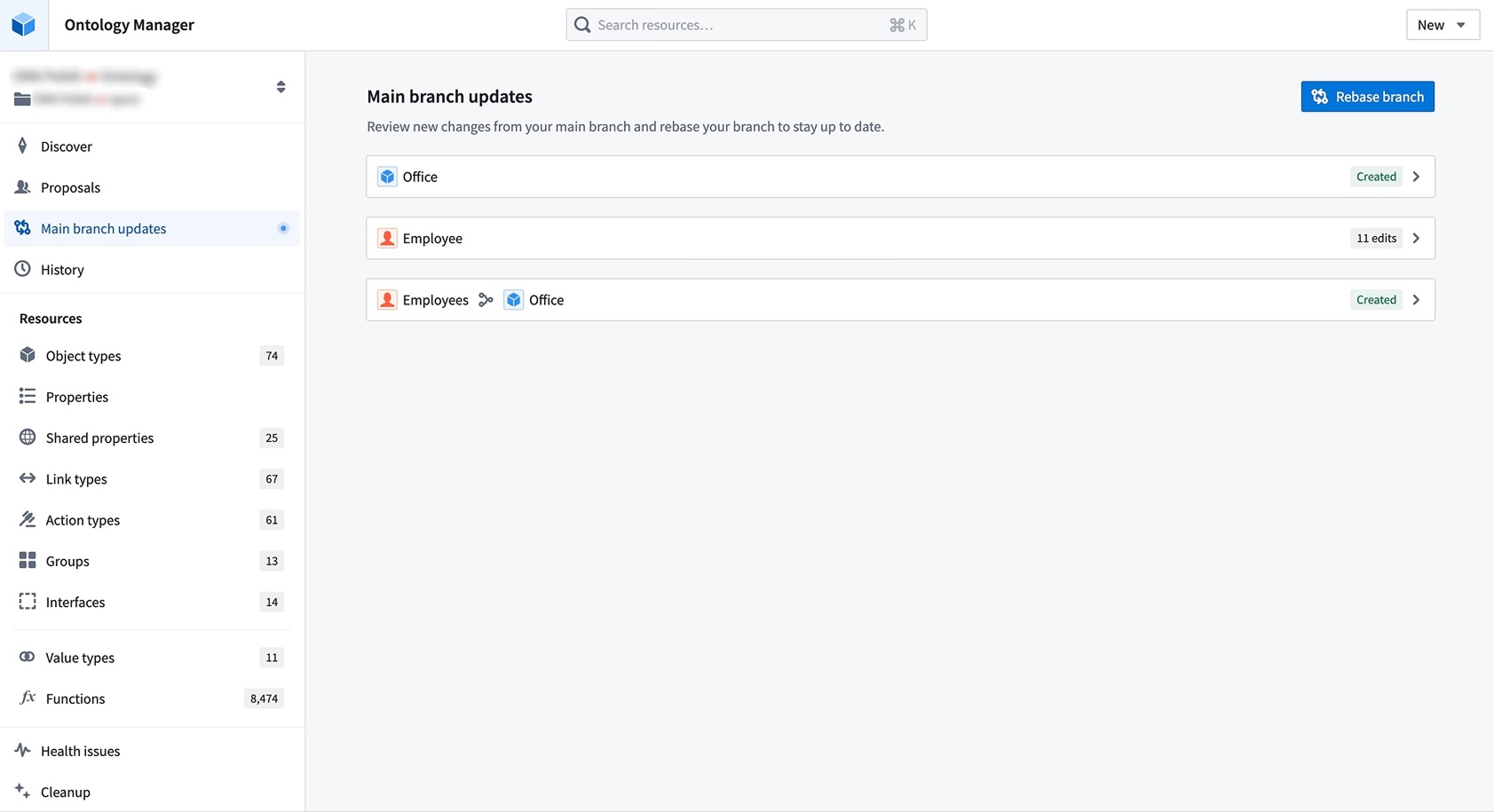
If there are no conflicts or errors, the rebase will complete automatically, and your branch will be up-to-date.
Resolve merge conflicts
If there are conflicts, your rebase will remain in progress, and you will be redirected to the Conflicts tab to resolve any conflicting changes between your branch and Main. If there are only errors, you will be redirected to the Errors tab instead.
During rebasing, changes from Main are loaded onto your branch, while any previously saved changes from your current branch are reloaded back into the working state, which you can see in the All changes tab.
This state allows you to view and access changes from both Main and your branch. When an ontology resource has changes from both branches, it will display your branch version by default.
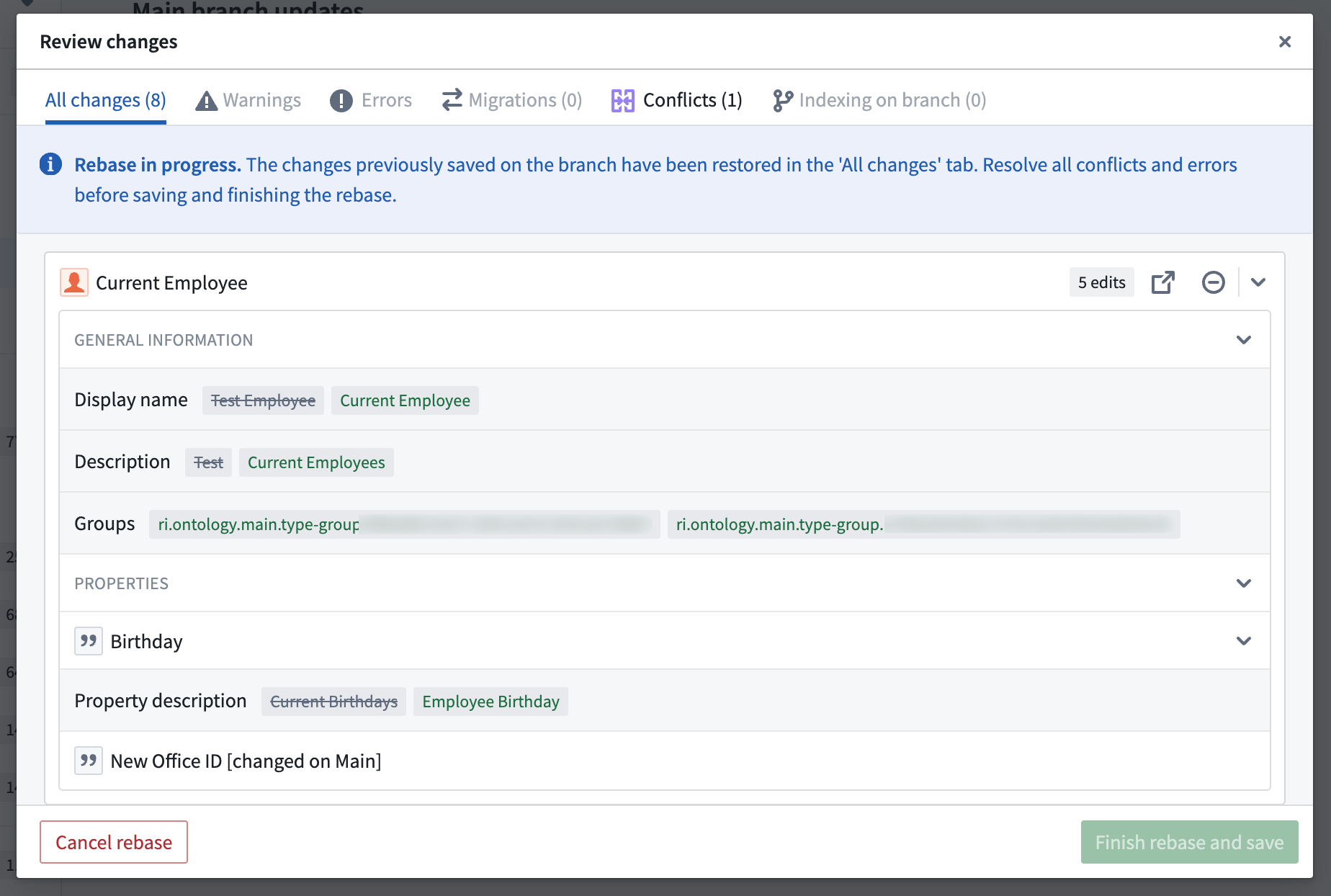
To resolve conflicts, you can choose to Use Main branch changes or Keep current branch changes for each resource. Alternatively, you can navigate directly to that resource and apply custom changes to resolve its conflicts.
In this example, the Palantir employee object type has a conflict in which the display name has been changed on both Main branch and your branch. To resolve this conflict, choose which version of this object type to keep.
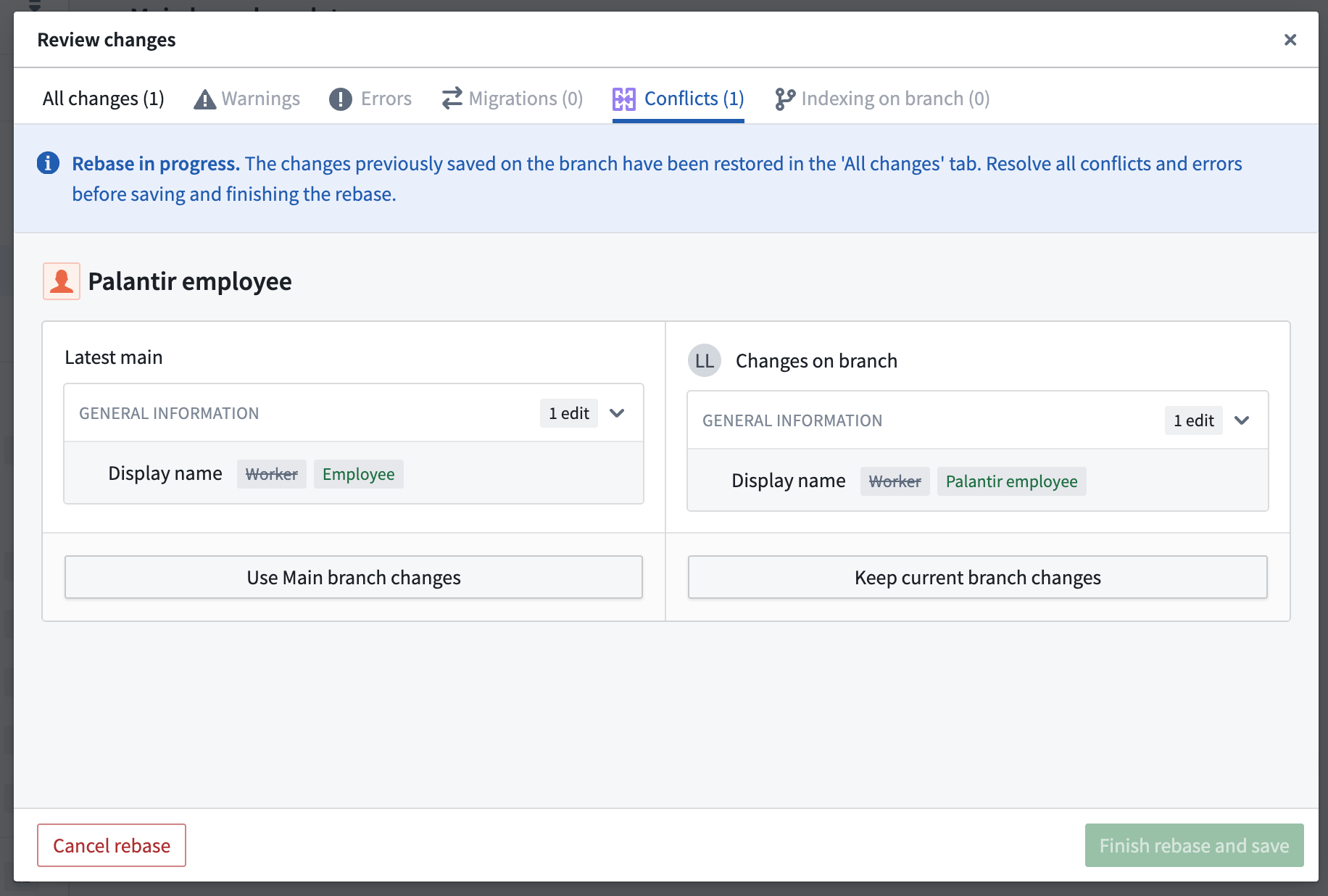
You can also resolve this conflict by making a custom change. In the example, you can navigate to the object type and change its display name from “Palantir employee” to "Current employee". The conflict will now be resolved due to this custom change.

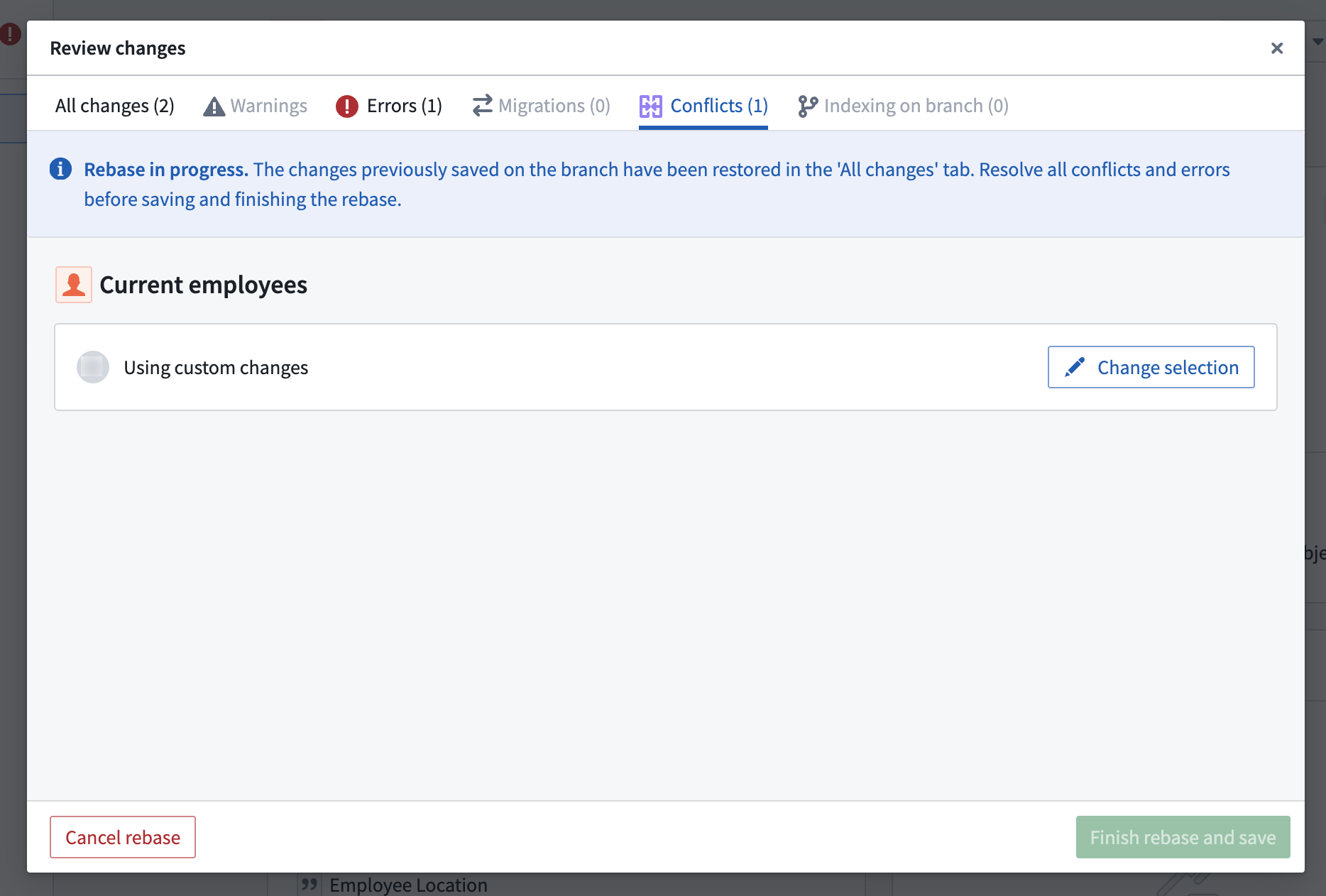
After resolving all conflicts, ensure any errors are addressed before finishing your rebase.
Finish rebase
Once all errors and conflicts have been resolved, you can select Finish rebase and save, and your branch will be up to date.

You can continue working on your branch and rebasing regularly to keep your branch current with the latest version of Main branch.
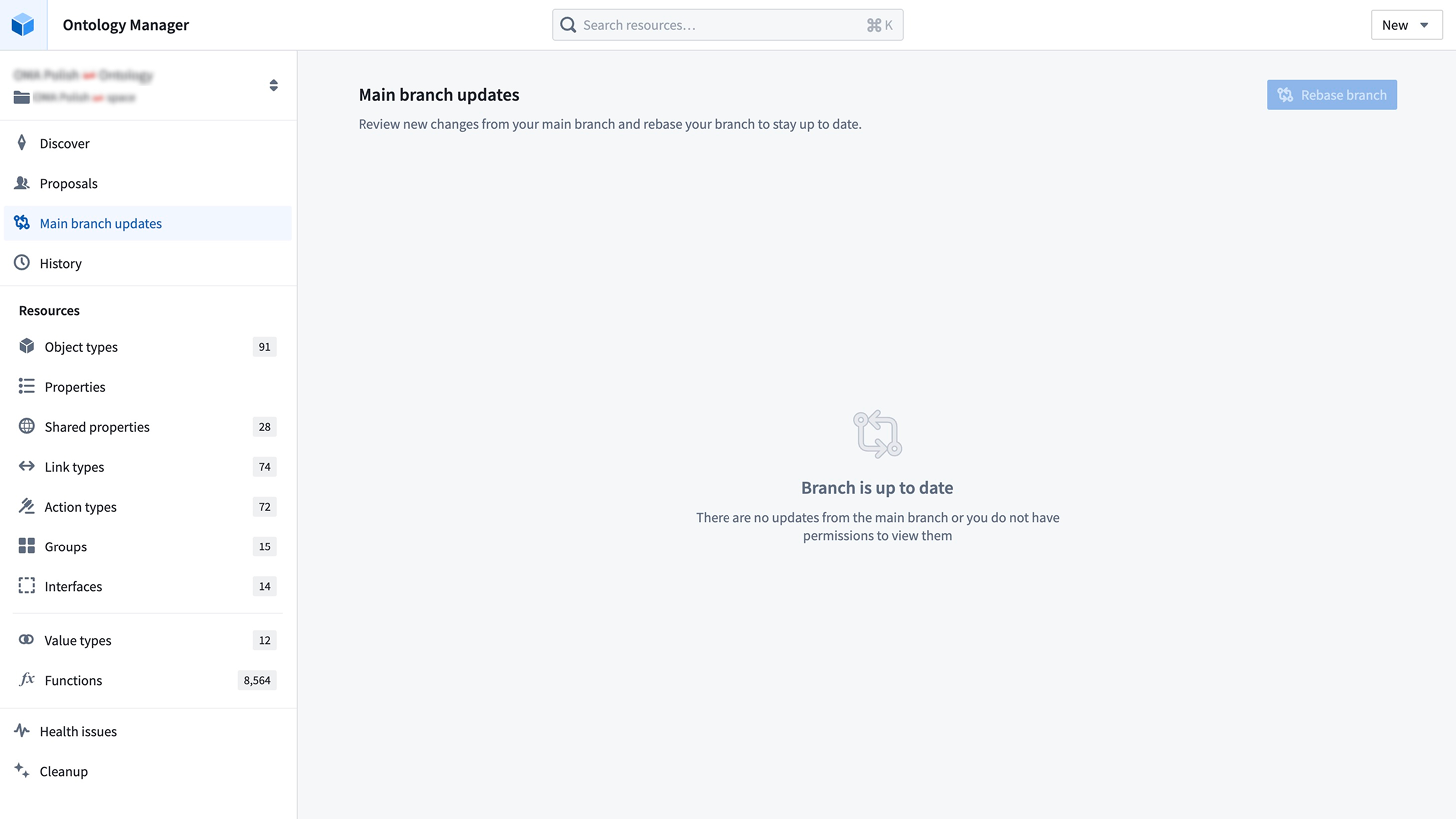
Known limitations
These are the known limitations that we are tracking and in the process of resolving:
- Schema migrations: In the case where there are schema migrations on both your branch and the
Mainbranch that affect the same object type, rebasing or merging your branch will most likely fail. For now, we suggest discarding the object type changes on your branch or alternatively, you can contact Palantir support. - Datasource replacement: When a conflict occurs on an object type where a backing datasource has been replaced or removed on
Mainbranch, choosing to keep your branch changes will lead to a merge failure. In this case, we suggest choosingMainbranch changes.
3. Prepare your branch for review
When you are ready to merge your branch into Main branch after making your changes, you can create a proposal by selecting the Create proposal icon in the branch task bar. Add a name and description to set up your proposal.

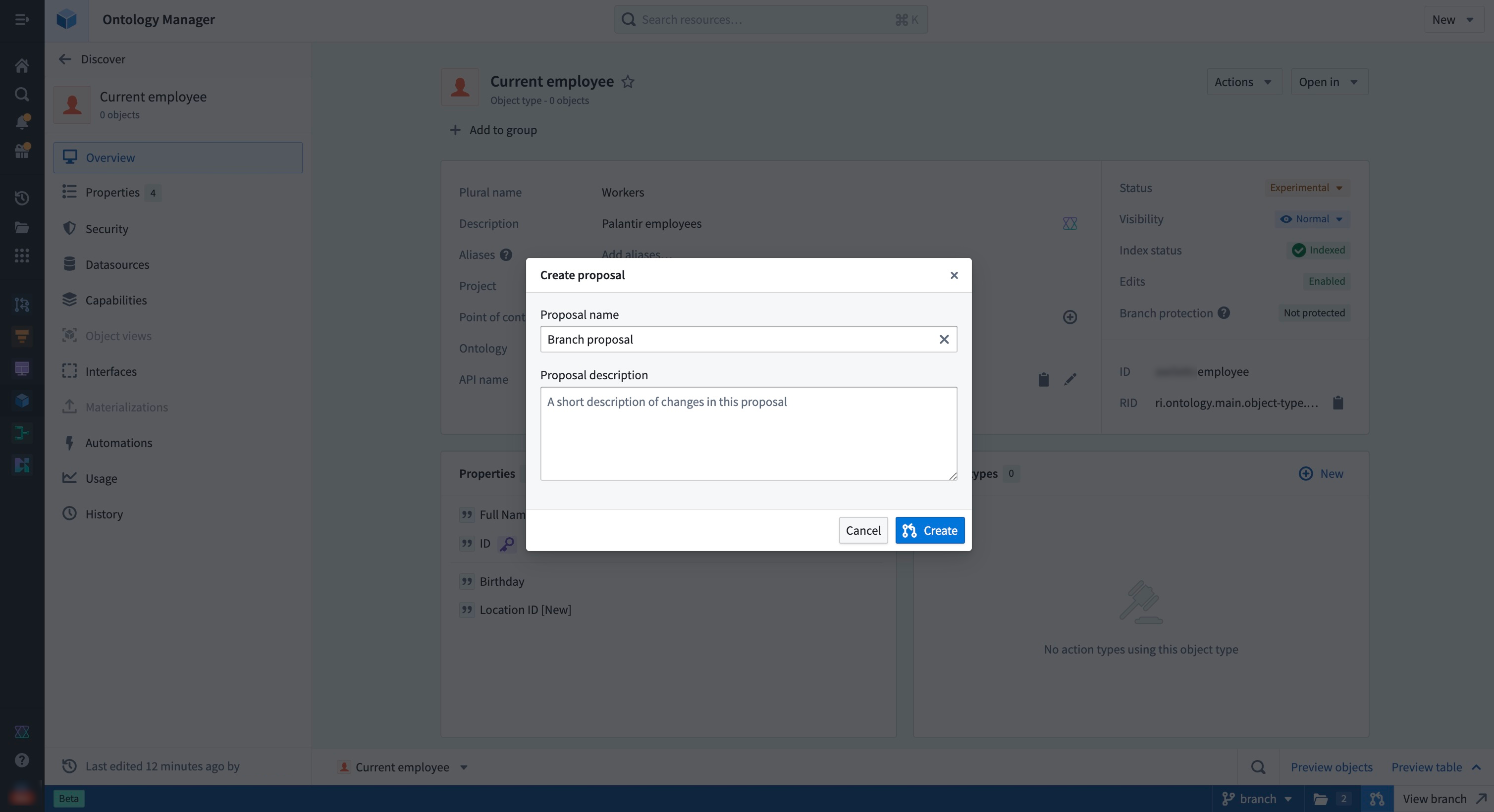
When a proposal is created, merged checks will run to verify whether the resources on a Foundry branch are able to merge into Main branch. Failed checks can include conflicts between your branch and Main branch, which would require you to rebase your branch.
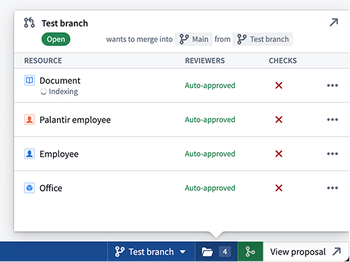
Request a review
You can add reviewers to your proposal through the branch task bar, the Foundry branching proposal page, or the ontology proposal page.
On the ontology proposal page, go to Review changes and select Invite reviewers to add reviewers to your proposal.
For ontology resources that have migrated to projects, select View policies to see which reviewers are required to review a resource based on the associated project policies.
Each ontology resource is considered an individual task. The status tag next to the resource name indicates the overall approval status, while the Your review section on the right allows you to submit a review.
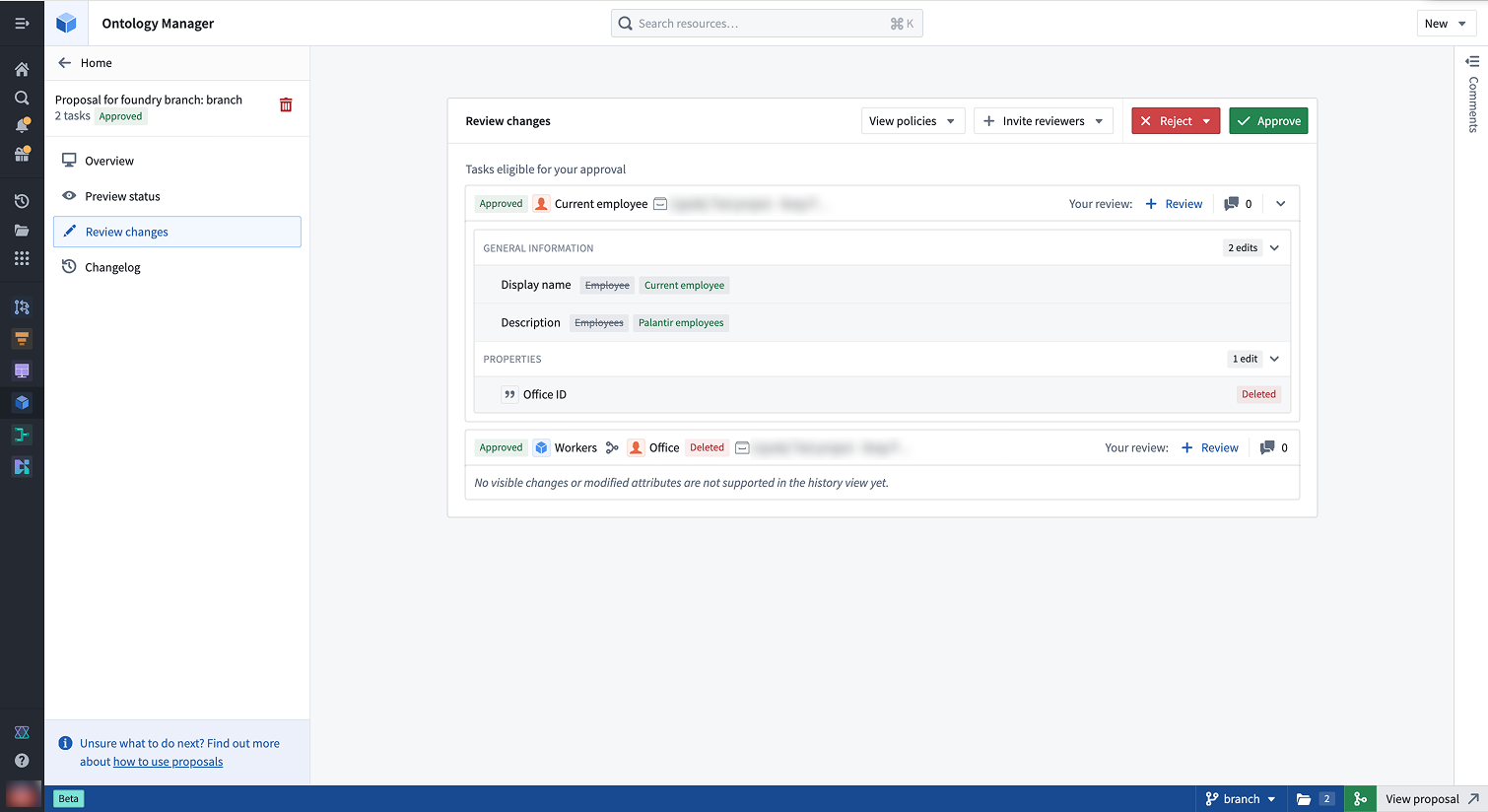
You may also leave comments on the various tasks in your proposal to give context about the changes proposed. Access the Comments section of your tasks by selecting the Comments sidebar on the far right.
Review the proposal
In the Review changes tab, reviewers may approve or reject individual tasks. Users without permissions may still review the task, for example, to convey their opinions on the change, but this will not affect the approved status of the task.
Users with approval rights can approve proposals even if not added as reviewers. Use the reviewers list to track who should review changes, not to restrict approvals.
4. Merge your branch
When you are ready to merge your changes to Main, you must merge your Foundry branching proposal. This will automatically kick off the merge process for the ontology.

To do so, select the merge icon in the branch task bar, or navigate to your proposal page in Foundry branching and select Merge proposal.